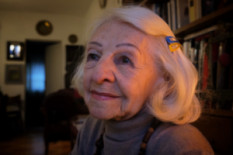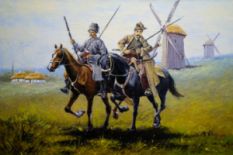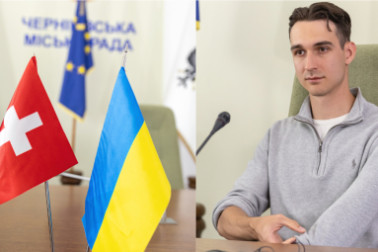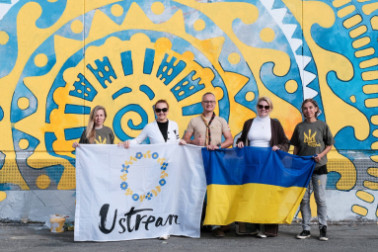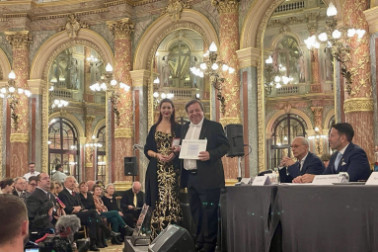On that day, the peaceful life of all Ukrainians and Oleh Pinchuk's ended. The new reality of constant anxiety and uncertainty started.
We talked with Oleh Pinchuk about what it's like for an artist to live and create while the war rages around, and if there is a place for art in such gruesome times.
At the beginning of this war, many Ukrainian artists couldn't create art because of the emotional burden. On the other hand, some said they couldn't help themselves not to create. What did you do on those first days of the full-scale invasion?
- I couldn't work at all. What could I possibly create when people were dying, and the missile hit the house next door (one of the first missiles hit the residential building just opposite from where I live. I remember all the windows then shattered, and bricks and other debris covered the courtyard after the massive explosion).
I was in deep shock for the first few days, despite understanding that the war could start any minute. But, of course, there were not just rumors back then; people were discussing the possibility of a big war straightforwardly. But it's like we all were in limbo until it actually happened. It finally downed on me after I saw many disturbing images that started to appear pretty fast on the internet, picturing destroyed houses and wounded people and the atrocities of Bucha and Irpin later. That was when I grasped the new reality of the war we all live in now.
At first, I thought it might be over soon, in a few days or a week, but war is already going on for the second year. I have realized that the war has started, but sometimes I think I will never be able to grasp the scale of the tragedy.
As for my sculptures, I had never returned to them. I had a feeling that everything I was creating before the war became irrelevant, and I had no right to go on with it.
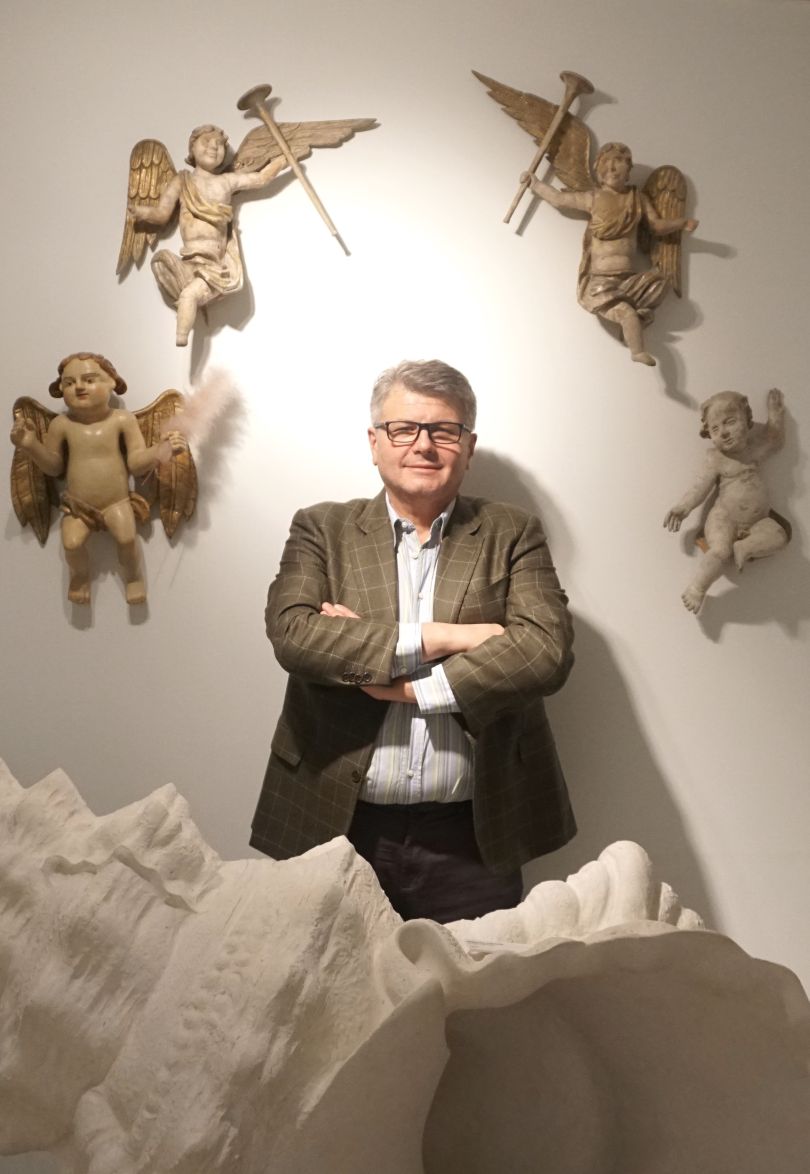
How did you adapt to the new reality and return to the creative process?
- Creating a sculpture is not a problem, you know. Being a genuine artist while you are at it is important to me. Being an artist is more complex, and being an artist during the war is even more challenging. I'm working on many sculptures at the moment, but I never finish them; I deconstruct and morph them together for the sake of the process, so to speak.
The sculpture or a painting becomes a piece of art not when physically finished, but when its life goes on outside the artist's studio. As for the moment, I'm still determining if I can guarantee such a life for my artwork.
Many of my Ukrainian colleagues go on with their work, but figuratively speaking, most of the art they create goes on the shelf. They have strong emotions and loud thoughts that they would like to express through their art, but that's only one dimension of creativity. The other dimension is the future of these works. And as for now, the future for these artworks is uncertain. During the war, professional art is little in demand. Of course, we need art to create symbols of our fight, commemoration, we need it for charity projects, and the representation of Ukraine on the international art scene. However, artists struggle during wartime, and it's more challenging for them than it might look at first glance. They must adapt to the new market realities, which is essential for survival.

Have you showcased any of your works during 2022?
No. That was my decision. At the moment, I don't want to.
Please tell us then about your other activities during that year.
- For instance, I have this idea to engage one of the star architects in a project for the new Mariya Prymachenko Museum. And I'm actively working on it. This museum could be in Ivankiv village, where Russians destroyed the local museum, home to many of Prymachenko's paintings, or anywhere in Kyiv. I wish Sir Norman Foster could look into that project. However, his studio is said to be already dealing with the restoration of Kharkiv city. I also want to discuss this project with another architectural bureau — Herzog & de Meuron. You may have heard about this Swiss studio and its projects, as they created the National Library of Israel, the Olympic Stadium in Beijing, and the Elbphilharmonie and Laeiszhalle in Hamburg.
If this idea becomes a reality one day, I will happily give Mariya Prymachenko paintings from my private collection to the new museum. I'm proud to have some of her most notable works. The participation of star architects in this project is crucial, as this instantly will place the new institution on the world art scene.
I'm currently working on this project. One has to be enthusiastic and knock on numerous doors to make this idea a reality.
Also, I had a chance to visit many art exhibitions in 2022, including some in Switzerland. Here artists have an entirely different language. Art is a language to some extent, and here artists speak in a different manner.
This language might seem bizarre and incomprehensible for Ukrainians, just like the Swiss public might need help embracing Ukrainian art. I also like to refer to art as something that gives out specific vibrations, and those vibrations could be vast or relatively local.

You said that the Swiss artistic language differs from Ukrainian. Could you indicate the most significant differences?
- They are pretty frantic. Ukrainian art is very strong academic-wise; it is professional; it has tradition. However, Ukrainian art must still be adapted to modern-day international economic realities.
There are few Ukrainian artists at international auctions, such as Sotheby's or Christie's. Even Ukrainians perceive Ukrainian art as something more practical, something one can decorate their house with.
Sadly, we don't have instruments and people that could turn Ukrainian art into a brand. You only need a little to do that; a mere understanding of the international art scene and financial support. Currently, most professionals working in the art sphere here in Ukraine have more shortsighted plans and tasks – to quickly sell as many art pieces as possible with the most considerable margin.

There is little Ukrainian art at Sotheby's or Christie's. However, we can't deny that 2022 became a record-breaking year for Ukrainian art abroad in terms of exhibitions, festivals, and concerts. So, what do Europeans think of our art? Have their thoughts changed since the last year?
- As for now, our artists can not compete with international star artists. It has nothing to do with their talent, education, or artistic approach. It is all about the integrity of Ukrainian art within the international art scene I was talking about earlier. We still have to work on this.
European audience is very diverse. In Europe, people are not big art fans. Some might come to the exhibition of Ukrainian art because they know that there is war in our country, and they want to support us. Somebody can buy an art piece at a charity auction. But there are no crowds at Ukrainian art exhibitions here in the West. For instance, there was an extensive exhibition of 19-20 century Ukrainian paintings at the Basel Fine Arts Museum (the collection was evacuated from the National Kyiv Art Gallery to Switzerland for safekeeping at the beginning of the war). Visitors mainly came on the free admission days, otherwise, the spaces were pretty empty.
Today foreigners see Ukrainian art not for its aesthetics but for the chance to help and support our country, which is already very good and much appreciated. For example, Mariya Prymachenko's painting was sold at the Venice Biennale auction last spring for an astonishing amount. It all went to charity.

Can we change the situation with the perception of Ukrainian art worldwide? And if so, how can we do it?
- Single artists can't change that. Only a systematic approach by local art professionals, experts, and patrons could change that. Investment in art and culture can be an excellent way to support a sector, the survival and autonomy of which requires significant resources.
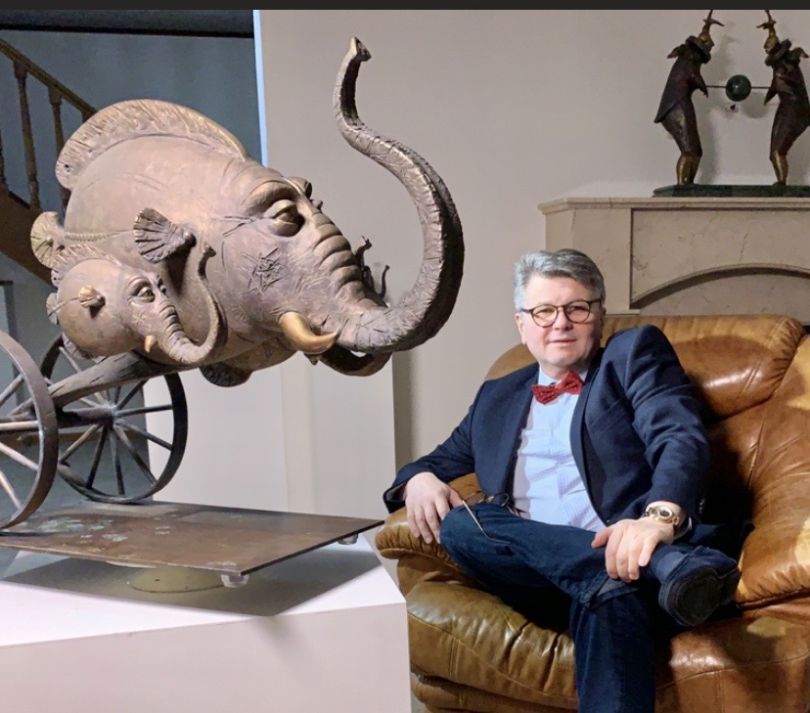
And what about the difference in artistic languages of Ukraine and Europe you were talking about earlier? Should we be doing something with it?
- Yes, in Ukraine, artists tend to use figurative art. In Europe, it's more about mixed media art, installation, performance, and photography. They step aside from academic art and use more digital technologies in creating.
I think Ukrainian artists shouldn't mimic their foreign colleagues or try to follow any trends if they don't feel natural to them. Artists must be sincere and original in what they are doing.
For instance, in my opinion, it's not a good idea for my Ukrainian colleagues to switch to installation immediately just because it's trendy. Moreover, I wouldn’t say I like the idea of installations made from the remains of missiles or tanks, which is a relatively widespread practice right now. In many cases, it’s more about a trend, than it is about art. I call it a situational art. And art can not be situational. It should be universal. The work of art should remain relevant to the audience years (or decades, or even centuries) after it was created.
What plans does the artist Oleh Pinchuk have for the future?
To continue working. I want my art to be a bullet that always hits the target.
